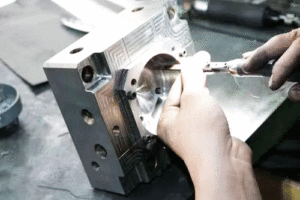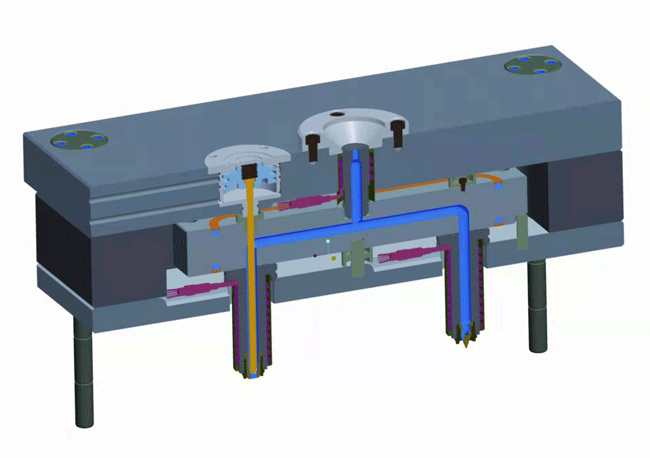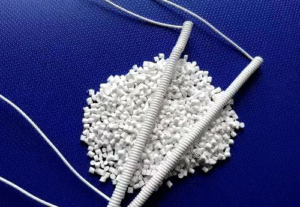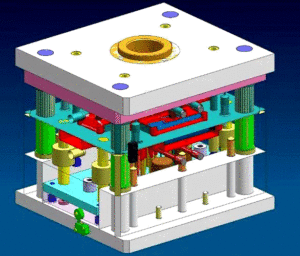
Polishing Treatment for Plastic Molds
Polishing Treatment for Plastic Molds With the widespread application of plastic products, such as daily-use items and beverage packaging containers, there is often a requirement
The hot runner system is a key element of a multi-cavity injection mold. Besides, it is very complex, including various aspects such as mechanical action, heating technology and precision manufacturing. The successful application of a hot runner system in an injection molding environment requires a detailed analysis of the sprue design form, cavity geometry, resin, and molder.
During the initial application analysis, we should evaluate the following questions:
The application analysis include: computer-aided engineering analysis, resin testing, and design of the hot runner concept.
Computer-aided engineering analysis tools, including MoldFlowTM analysis software, can be used to analyze the flow of molten plastic in mold systems. These programs are often used by mold designers to predict the injection pressure, flow lines, porosity, shrinkage, and warpage.
Apply computer-aided analysis to mold production projects as early as possible. Even a cursory analysis at the initial stage has the potential to address important issues such as injection molding possibilities, production cycle times, pressure requirements, and prediction of flow lines.
With the help of computer engineering design software, it is easy to perform repeated simulation demonstrations for different scenarios. And it’s beneficial to reduce production costs and test time.
The use of flow modeling procedures for part analysis is very common. But the addition of hot runner manifolds to the analysis process is relatively recent. Modeling the geometry of the manifold melt channels will facilitate more accurate predictions. Also, these software programs are useful when balancing a mold with multiple sized cavities.

The resin test is used to evaluate the processability of a resin formulated to a certain composition. Moreover, only a short portion of these resins are hot runner treated or not treated at all.
Resin tests are designed to evaluate the process window of the resin and each component combination.
In addition to standard test procedures, specialized tests may be performed to evaluate special processing parameters or requirements.
Before finalizing the mold design, the resin testing allows customers to obtain actual process data required prior to initial mold testing. And then it can provide samples of the molded part.
Another important step is the design concept of the hot runner. A detailed design concept, including manifolds and platens, will be an important part of the mold review.
The hot runner is a complex and advantageous mold part. In mold production projects, CAE analysis, resin testing and design concept, etc., can be completed by the hot runner system supplier. Early in a project, the mold designer can further optimize the final product if the hot runner supplier is involved.
Manifolds are used to ensure that the melt channels can be arranged in the most efficient way. Ideally, the melt channel is designed in a symmetrical manner. And the flow length and number of turns are the same for all downflow channels.
In the case of multi-cavity molds or asymmetric molds, the melt channel may include artificial lengths and turning points to properly balance the system. This concept is helpful to both the mold designer and the hot runner designer. For it can ensure the best manifold design.
In addition, the use of platen technology ensures the design of the closing height and key features required by the customer. With the inclusion of a hot runner nozzle in the nozzle, the mold designer also needs to confirm that the sprue access and cooling will meet the hot runner manufacturer’s requirements.

Polishing Treatment for Plastic Molds With the widespread application of plastic products, such as daily-use items and beverage packaging containers, there is often a requirement

Injection Molding Techniques for TPE and TPR Injection Molding Techniques for TPE and TPR 1. Dry the TPE and TPR material before injection molding It

Winter Maintenance Measures for Injection Molding Machines As winter approaches and temperatures gradually drop, a cold chill envelops the earth. While ensuring personal warmth, it

Assessment Regulations for Mold Trial Exceeding 3 Times Assessment Regulations for Mold Trial 1. Purpose The purpose of this regulation is to standardize the work of